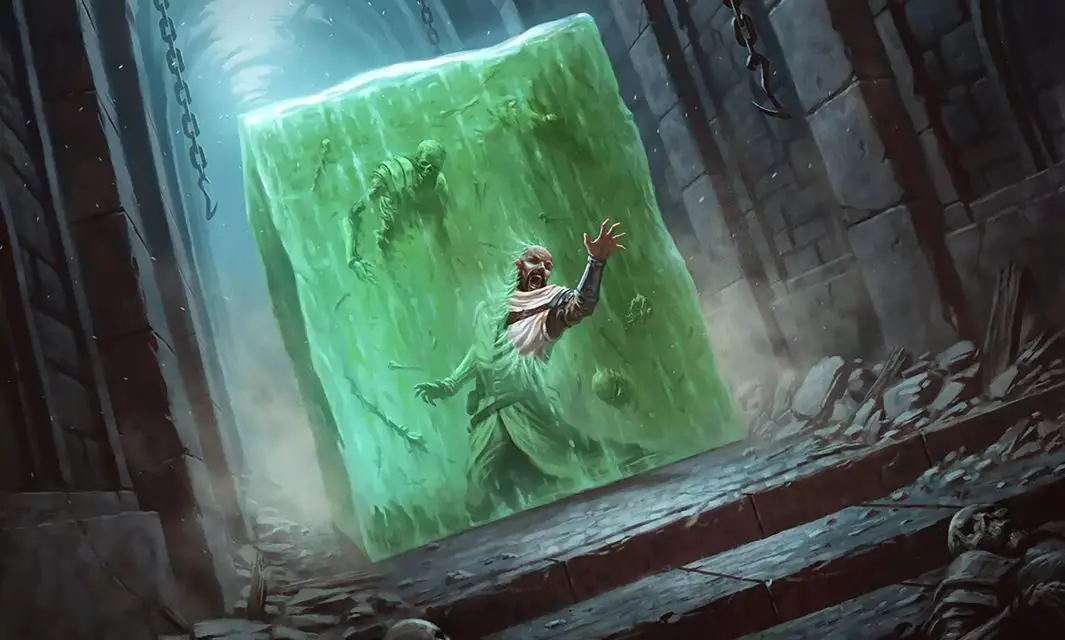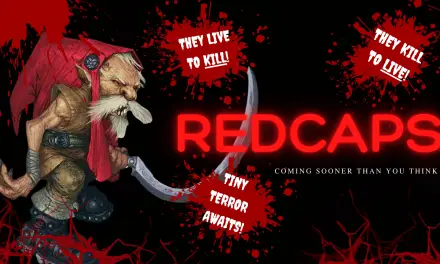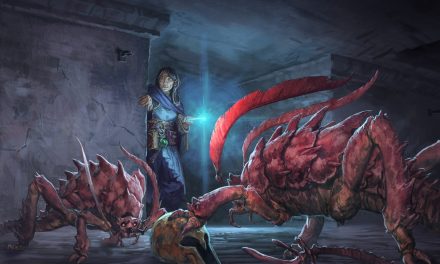It might be easy to underrate the Gelatinous Cube in D&D 5e. However, these seemingly simple oozes have been a staple of dungeon crawls for decades, providing both peril and peculiar charm to countless campaigns!
Whether you’re a seasoned player who’s had a close encounter with one of these transparent terrors or a new DM looking to add a unique twist to your dungeon design, this article is for you.
We’ll explore the ins and outs of Gelatinous Cubes, from their lore and characteristics to practical tips for both players and DMs. By the end, you’ll have a newfound appreciation for these gelatinous juggernauts and be well-equipped to either survive an encounter or craft one that your players will never forget.
So, grab your adventuring gear and let’s delve into the squishy, sticky world of Gelatinous Cubes!
What Are Gelatinous Cubes?
At first glance, a Gelatinous Cube might seem like a simple, albeit oversized, block of jelly.
But don’t let their unassuming appearance fool you! These oozes are a blend of danger and dungeon-cleaning efficiency that can turn any adventurer’s day into a sticky situation.
Gelatinous Cubes are exactly what their name suggests: large, transparent cubes of gelatinous matter, typically measuring 10 feet on each side. Their transparency makes them deceptively hard to spot, especially in the dimly lit corridors they often patrol.
Imagine a perfectly clear block of Jell-O, but one that can move, engulf, and digest anything organic in its path. Inside, you might see the faint outlines of their last meal—bones, armor, and other indigestible remnants suspended in their gooey interior.
These cubes are more than just oversized blobs. In D&D 5e, a standard Gelatinous Cube boasts an Armor Class (AC) of 6 and a hefty pool of 84 hit points (8d10 + 40). They aren’t fast, with a speed of only 15 feet per round, but what they lack in speed, they make up for in persistence and sheer volume.
Think of Gelatinous Cubes as the Roombas of the dungeon world, slowly gliding through hallways and chambers, absorbing anything organic that crosses their path. They’re mindless and driven by one simple instinct: to consume.
This makes them both predictable and relentless. They don’t strategize or flee; they just keep moving forward, engulfing everything in their way.
Their primary mode of attack is, unsurprisingly, engulfing their prey. When a creature is engulfed, it’s trapped inside the cube’s gelatinous body, taking acid damage each round and struggling to escape. The cube’s pseudopod attack allows it to lash out and pull creatures into its body, adding an extra layer of danger to any encounter.
Despite their simplicity, Gelatinous Cubes play a vital role in the ecosystem of a dungeon.
They clean up organic debris, keeping passages clear of rotting bodies and other refuse. This makes them an essential, if underappreciated, part of the dungeon’s natural order.
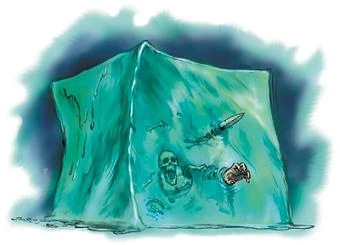
Gelatinous Cube Lore & Background
Gelatinous Cubes might seem like a modern invention of dungeon design, but their origins and lore are as rich and fascinating as the dungeons they inhabit. These transparent titans have slithered through the annals of Dungeons & Dragons history, becoming an iconic element of the game’s mythology.
The concept of the Gelatinous Cube was first introduced in the early days of D&D, designed to fit perfectly within the standard ten-foot-wide corridors of many dungeons. This clever bit of design ensured that the cube could move seamlessly through dungeon hallways, making it an ever-present threat to adventurers who might otherwise feel safe in narrow passages.
The idea was simple yet brilliant: a slow-moving, nearly invisible predator that could trap the unwary.
In the lore of D&D, Gelatinous Cubes are often considered the janitors of the dungeon world. They tirelessly patrol the labyrinthine halls, absorbing organic matter and leaving the stone floors pristine.
This cleaning process not only prevents the accumulation of refuse but also helps to control the spread of disease and pests within the dungeon. Dungeon masters often use Gelatinous Cubes to explain why certain areas remain mysteriously clean despite being abandoned for centuries.
It’s What’s Inside That Counts!
One of the most intriguing aspects of Gelatinous Cubes is their near-perfect transparency. This makes them incredibly difficult to spot in the dim light of a dungeon, often leading to surprise encounters.
Adventurers might only notice the cube when they see a glint of light reflecting off a suspended piece of armor or bone.
The cube’s digestive process is slow but thorough. Anything organic that gets engulfed is gradually broken down by its acidic interior. Inorganic materials, however, remain untouched, often floating within the cube until it eventually expels them.
Despite their lack of intelligence, Gelatinous Cubes are remarkably effective at what they do. They don’t need to think or plan; they simply move forward, engulfing everything in their path.
This single-mindedness makes them both predictable and relentless.
Cultural Impact
Over the years, Gelatinous Cubes have become a beloved part of D&D culture. In their own way, they are right alongside other classic and iconic D&D foes like Beholders and Mind Flayers in that regard.
They’ve appeared in countless campaigns, novels, and even video games. It was hard not to squeal with delight when we got to see one of these oozey foes on the big screen in Dungeons & Dragons: Honor Among Thieves!
Gelatinous Cubes’ unique combination of simplicity and danger has made them a favorite among both players and dungeon masters. They embody the spirit of D&D—turning the mundane into the magical and the simple into the perilous.
In a way, Gelatinous Cubes are more than just a monster; they are a symbol of the creativity and ingenuity that defines Dungeons & Dragons. Their lore and background add depth to the game’s world, reminding adventurers that even the most unassuming creatures can pose a significant threat.
Understanding their place in the dungeon ecosystem not only enriches the gameplay experience but also highlights the meticulous world-building that makes D&D so captivating.
Tips for Players Encountering Gelatinous Cubes 5e
Encountering a Gelatinous Cube can be a harrowing experience for any adventurer.
These transparent terrors are masters of ambush and can quickly turn a routine dungeon crawl into a desperate fight for survival.
But fear not, brave adventurers! With a bit of preparation and some clever tactics, you can outsmart, outmaneuver, and ultimately defeat these gelatinous juggernauts.
Spotting the Gelatinous Cube
The first step in surviving an encounter with a Gelatinous Cube is to spot it before it spots you. Given their transparency, this can be easier said than done.
Here are a few tips to help you detect these hidden hazards:
- Look for Suspended Objects: Keep an eye out for floating debris inside what appears to be thin air. Bones, weapons, and other items suspended in mid-air can be a telltale sign of a lurking cube.
- Check for Clean Corridors: Gelatinous Cubes leave a path of cleanliness in their wake. If you notice an unusually clean section of the dungeon, it might be a sign that a cube is nearby.
- Use Light Wisely: Shine your torch or magical light sources around corners and into dark spaces. The light might reflect off the cube’s surface, giving away its position.
Whether you’re a player or a DM, I would also recommend brushing up on 5e’s rules for Passive Perception.
Remember, a Gelatinous Cube that isn’t attacking or moving takes a DC 15 Wisdom (Perception) check to spot. Failing to spot the cube could mean getting both surprised (which is unfortunate) and engulfed by it (even more unfortunate!).
Effective Combat Strategies
Once you’ve identified the Gelatinous Cube, it’s time to engage—or avoid—combat.
Here are some strategies to keep in mind:
- Exploit Vulnerabilities: Gelatinous Cubes have a low Armor Class (AC) of 6, making them ridiculously easy to hit. Use high-damage attacks to take advantage of this weakness and bring them down swiftly.
- Keep Your Distance: The cube’s speed is its greatest weakness. With a movement rate of only 15 feet per round, you can easily outpace it. Use ranged attacks to whittle down its hit points from a safe distance.
- Avoid Engulfment: If you find yourself too close for comfort, prioritize movement over attacks to avoid being engulfed. If a party member gets trapped, focus on freeing them quickly.
Survival Tips
Surviving an encounter with a Gelatinous Cube isn’t just about dealing damage; it’s also about avoiding damage.
- Prepare for Acid Damage: The cube’s acidic nature means you’ll be dealing with ongoing damage if engulfed. Have healing spells and potions at the ready to mitigate the damage and keep your party members alive.
- Stay Mobile: Keep moving to avoid being cornered or surrounded. The cube’s slow speed means it can’t keep up with a mobile party.
- Use the Environment: Lead the cube into traps or hazardous areas if possible. Narrow corridors can work to your advantage, as the cube’s large size can make it difficult for it to maneuver.
Team Coordination
Gelatinous Cubes are easier to handle when your party works together. Coordinate your attacks and movements to maximize your effectiveness!
- Designate Roles: You might have one or two party members focus on ranged attacks while others prepare to assist anyone who gets trapped. The acid damage from the Gelatinous Cube’s Engulf feature is no joke, so you need to save anyone who gets stuck quickly!
- Communicate: Keep lines of communication open to ensure everyone knows the cube’s position and the plan of action. The Gelatinous Cube might try to push someone into a corner, and communication is the best way to keep everyone spry.
- Support Each Other: Use spells and abilities that enhance mobility and provide healing to keep everyone in fighting shape.
By staying vigilant, using smart tactics, and working together, you can turn a potentially deadly encounter with a Gelatinous Cube into a rewarding victory.
Remember, the key to surviving these encounters is preparation and teamwork. So gear up, stay sharp, and may your adventures be filled with thrilling victories and minimal engulfments!
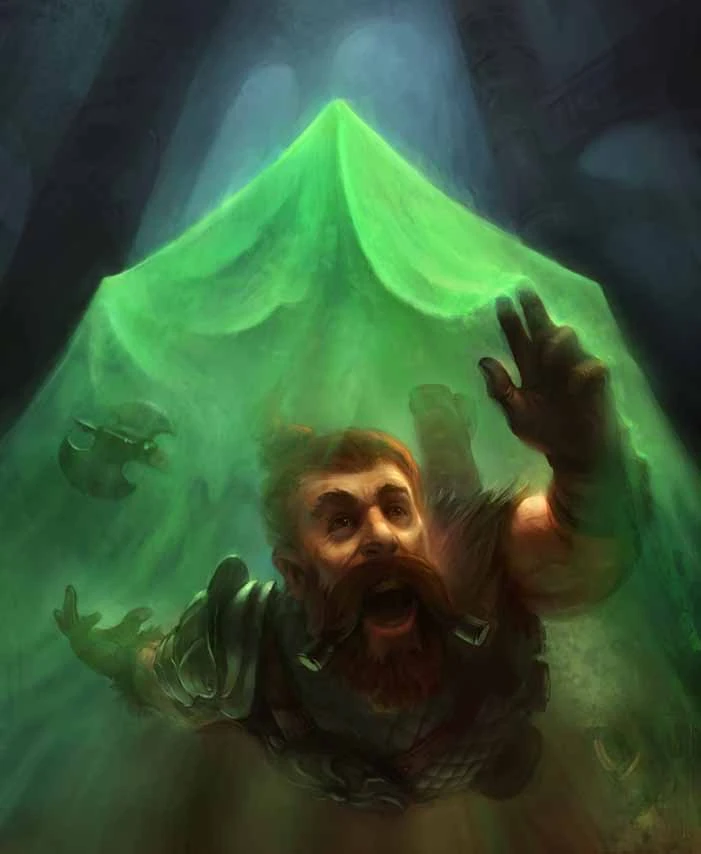
Tips for Dungeon Masters Running Gelatinous Cubes 5e
As a Dungeon Master, incorporating a Gelatinous Cube into your campaign can add a unique blend of tension, surprise, and strategy.
These creatures are more than mere obstacles; they are opportunities to challenge your players in creative ways.
Here’s how you can make the most of Gelatinous Cubes in your adventures!
Set the Scene!
Creating an atmosphere of suspense and discovery is absolutely key to a memorable Gelatinous Cube encounter.
Don’t just leave it at “a cube of angry Jell-O appears!”
We can do better!
- Lighting and Shadows: Play with lighting to create eerie effects. A glint of light reflecting off the cube’s surface or the shadowy outline of suspended debris can build anticipation.
- Subtle Hints: Drop subtle hints about the cube’s presence. Describe unusually clean corridors or mention the absence of typical dungeon detritus.
- Environmental Clues: Use environmental storytelling to foreshadow the cube. Perhaps the players find an adventurer’s journal warning of “invisible walls” or see items floating in mid-air.
Designing the Encounter
Designing an encounter with a Gelatinous Cube requires balancing challenge and fairness.
- Multiple Threats: Combine the cube with other dungeon hazards or creatures. For example, a fight with a group of goblins could become more complex when a Gelatinous Cube enters the fray, forcing the players to adapt their tactics.
- Ambush Potential: Position the cube in a way that it can surprise the players, but give them a fair chance to spot it with a successful perception check.
- Choke Points: Use narrow corridors and confined spaces to limit the players’ movement, making the cube’s slow speed less of a disadvantage and more of a looming terror.
Creative Uses
Gelatinous Cubes can be more than just combat encounters. These seemingly simple creatures are a blank canvas with infinite possibilities for how you can use them in your adventures!
Here are some innovative ways to use them:
- Puzzles and Traps: Integrate the cube into puzzles or traps. Perhaps the players need to lure the cube to dissolve a barrier or retrieve an item trapped within it.
- Environmental Challenges: You might use the Gelatinous Cube as a moving hazard in a larger encounter. Players might need to navigate a room while avoiding the cube’s path, adding an extra layer of strategy.
- Narrative Elements: Incorporate the cube into the story. A sentient cube modified by a Wizard could have unique properties or even communicate in a rudimentary way, adding depth to the encounter.
- (I once presented the party with a Gelatinous Cube that had absorbed a Ring of Haste which would randomly activate. I’ve never seen a party so terrified and the group still laughs about “The Terror Roomba” to this day.)
Enhancing the Experience
Especially when working with a classic D&D monster, you want to really do whatever you can to make the encounter with a Gelatinous Cube memorable.
There are three main things to keep in mind to do this…
- Descriptive Combat: Use vivid descriptions to convey the cube’s actions. Describe the slow, inevitable advance of the cube and the sizzling sound of its acidic touch.
- Player Agency: Allow players to interact with the cube in unexpected ways. Can they use it to their advantage? Perhaps they can lure enemies into its path or use its cleaning abilities for a non-combat solution.
- Post-Encounter Consequences: Consider the aftermath of the encounter. What treasures or clues were hidden within the cube? How does the environment change after the cube has passed?
By thoughtfully integrating Gelatinous Cubes into your campaign, you can create encounters that are not only challenging but also rich with storytelling potential.
Part of what makes the Gelatinous Cube such a beloved creature is that these oozes offer a unique way to test your players’ ingenuity and teamwork. It’s a great low-level encounter for promoting those traits and ensuring that the group’s adventures remain exciting and unpredictable.
So, roll those dice, unleash the cubes, and watch as your players rise to the challenge!
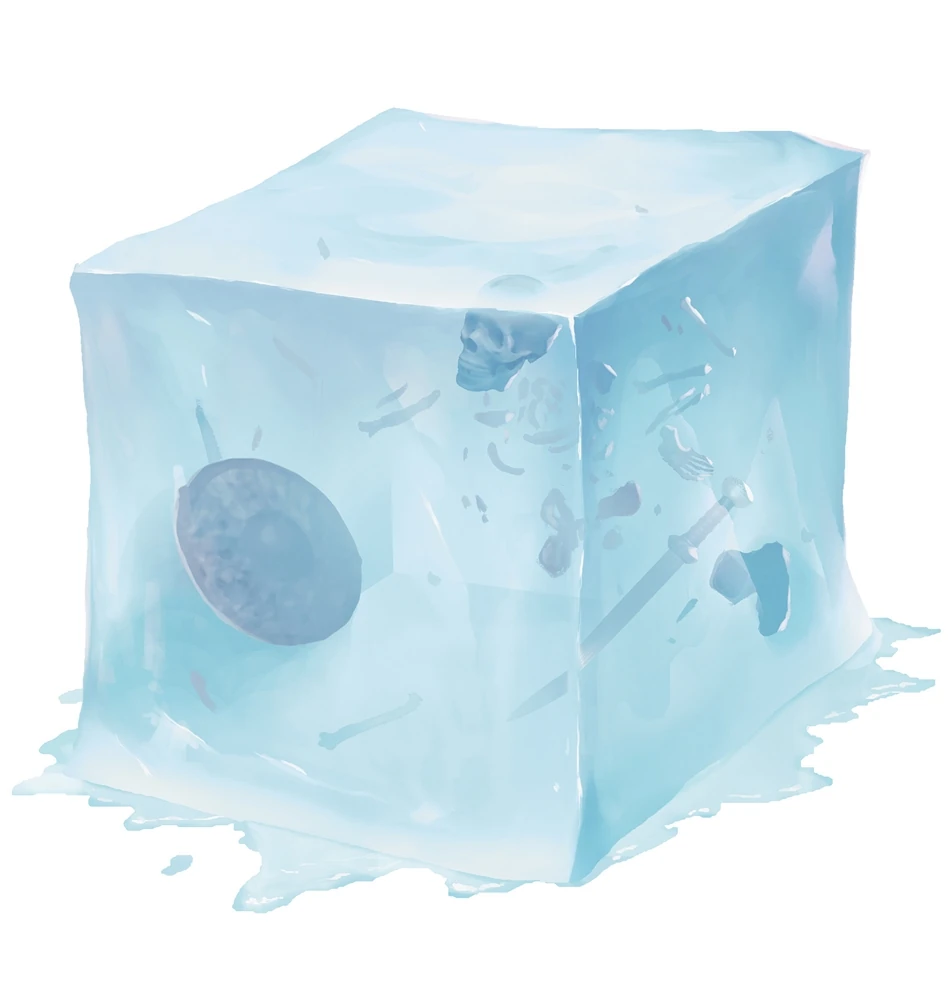
FAQs – Gelatinous Cubes 5e
Gelatinous Cubes are unique due to their perfect cube shape and transparency.
Unlike other oozes that might be amorphous blobs, Gelatinous Cubes fit perfectly into the ten-foot-wide corridors of dungeons, making them a natural and stealthy hazard. Their near-invisibility in dim light adds an element of surprise and danger that other oozes lack.
Gelatinous Cubes are generally mindless and will engulf anything in their path, including other dungeon creatures. This can lead to interesting dynamics, such as creatures avoiding areas known to be patrolled by cubes.
Some intelligent dungeon inhabitants might even use cubes as natural defenses, luring adventurers into their paths. However, most creatures will give Gelatinous Cubes a wide berth, recognizing the danger they pose.
Absolutely! Gelatinous Cubes can be used creatively in non-combat scenarios.
They can serve as living traps or environmental hazards that players must navigate around. They can also be part of puzzles, such as needing to lure a cube to dissolve a barrier or retrieve an item.
Their role as dungeon cleaners can also be a plot point, perhaps involving a wizard who uses them to maintain order in their lair.
The most common mistake is underestimating the cube’s engulf ability. Players often get too close, thinking they can easily dodge or escape.
Another mistake is neglecting to use ranged attacks to whittle down the cube’s hit points from a safe distance. Additionally, players sometimes forget to coordinate their movements, leading to multiple party members being trapped at once.
Final Thoughts – Gelatinous Cubes 5e
The Gelatinous Cube, a seemingly simple yet endlessly intriguing creature, has slithered its way through the annals of Dungeons & Dragons history, providing countless tales of peril and triumph.
Whether you’re dodging its invisible embrace or using it to craft a memorable dungeon encounter, the Gelatinous Cube offers a unique blend of challenge and creativity that enriches any campaign.
I hope this deep dive into the world of Gelatinous Cubes has armed you with the knowledge and inspiration to face these gelatinous juggernauts head-on. Remember, the key to mastering any encounter lies in preparation, teamwork, and a dash of ingenuity.
So, the next time you find yourself in a dimly lit dungeon corridor, keep your eyes peeled and your wits about you—you never know when a seemingly empty hallway might hide a deadly surprise.
We’d love to hear your thoughts and experiences with Gelatinous Cubes! Have you had a memorable encounter with one? Do you have any tips or stories to share? Drop a comment below and join the conversation.
For more tips, tricks, and tales from the world of tabletop gaming, be sure to sign up for the Tabletop Joab newsletter. Get the latest articles, exclusive content, and insider insights delivered straight to your inbox.
Until next time, may your adventures be thrilling, your dice rolls be high, and your encounters be unforgettable!

